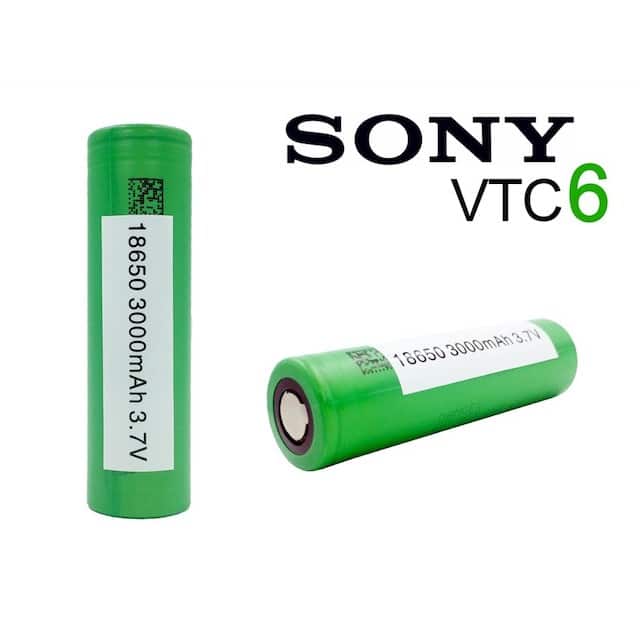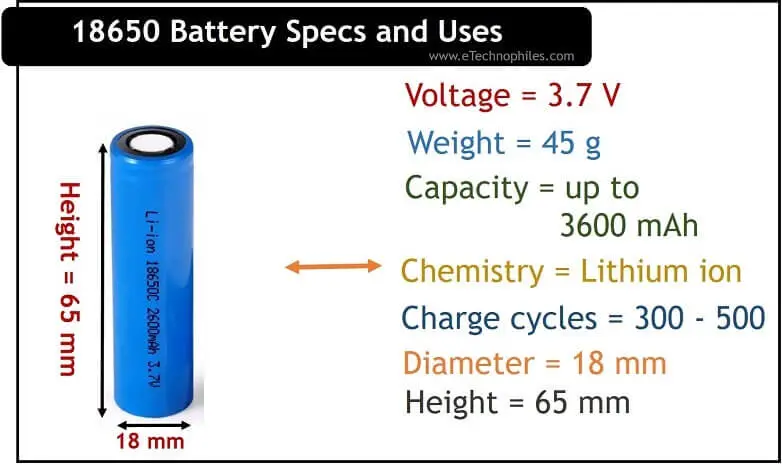- History of the 18650 Battery
- Specifications and Design
- Applications and Usage
- Advantages of the 18650 Battery
- Disadvantages of the 18650 Battery
- Safety Considerations
- Future Developments and Trends
The 18650 battery is a powerful and versatile energy storage device that has become increasingly popular in recent years. From its origins to its specifications and applications, this article will provide a comprehensive understanding of the 18650 battery, along with its advantages, disadvantages, safety considerations, and future developments.
Contents
History of the 18650 Battery
The 18650 battery was first introduced in the 1990s by the Japanese company SONY. The “18650” designation refers to its dimensions: 18mm in diameter and 65mm in length. Originally developed for use in laptops, the 18650 battery proved to be highly efficient and reliable, leading to its adoption by various industries.

Specifications and Design
The 18650 battery is a cylindrical lithium-ion battery that has gained recognition for its outstanding performance. Here are some key specifications and design features:
- Voltage: The 18650 battery typically operates at a nominal voltage of 3.7 volts.
- Capacity: It comes in various capacity options, ranging from 1500mAh to as high as 3500mAh, providing long-lasting power.
- Chemistry: The 18650 battery employs lithium-ion chemistry, which offers high energy density and low self-discharge rates.
- Protection Circuit: Many 18650 batteries come with a built-in protection circuit to prevent overcharging, over-discharging, and short circuits.
- Rechargeable: One of the significant advantages of the 18650 battery is its rechargeable nature, allowing for multiple uses and reducing waste.
The design and specifications of the 18650 battery make it suitable for a wide range of applications.

Applications and Usage
The versatility of the 18650 battery has led to its adoption in numerous industries. Here are some common applications and usage scenarios:
- Consumer Electronics: The 18650 battery is commonly used in devices such as laptops, power banks, flashlights, and electric scooters due to its high capacity and reliability.
- Electric Vehicles: Many electric vehicles, including electric cars, bicycles, and boats, utilize 18650 batteries as their primary power source.
- Renewable Energy Storage: The 18650 battery plays a vital role in storing energy from sources like solar panels and wind turbines, allowing for a more sustainable and efficient energy grid.
- Portable Electronics: From drones to handheld gaming devices, the 18650 battery provides a compact and lightweight power solution for various portable electronics.
The applications of the 18650 battery are vast and continue to expand as technology evolves.

Advantages of the 18650 Battery
The 18650 battery offers several advantages that contribute to its widespread popularity. Here are some notable advantages:
- High Energy Density: The 18650 battery provides a high energy density, allowing for longer battery life and efficient power delivery.
- Long Cycle Life: With proper care and maintenance, the 18650 battery can last for hundreds of charge-discharge cycles, making it a cost-effective choice in the long run.
- Wide Availability: Due to its popularity, the 18650 battery is widely available from various manufacturers, ensuring a steady supply for consumers.
- Compact Size: The cylindrical design of the 18650 battery makes it easy to fit into a variety of devices, enabling manufacturers to create more compact and portable products.
- High Discharge Rate: The 18650 battery can deliver high discharge rates, making it suitable for applications that require a burst of power.
Disadvantages of the 18650 Battery
While the 18650 battery boasts several advantages, it also has a few limitations. Here are some important disadvantages to consider:
- Limited Shape Options: The cylindrical shape of the 18650 battery may not be suitable for certain devices that require a different form factor.
- Higher Cost: Compared to other types of batteries, the 18650 battery can be relatively more expensive, especially when considering high-capacity options.
- Safety Risks: Mishandling or improper use of the 18650 battery can lead to safety hazards, such as overheating or explosion. Proper precautions must be taken to ensure safe usage.
- Self-Discharge: Like all lithium-ion batteries, the 18650 battery experiences self-discharge over time, meaning it will lose some capacity even when not in use.
It is essential to weigh the advantages and disadvantages when considering the use of the 18650 battery in different applications.
Safety Considerations
Safety is a crucial aspect when working with the 18650 battery. Here are some safety considerations to keep in mind:
- Proper Storage: Store the batteries in a cool, dry place to prevent overheating or leakage.
- Avoid Overcharging/Discharging: Overcharging or discharging the battery beyond its recommended levels can lead to safety risks. Follow the manufacturer’s guidelines and use dedicated chargers.
- Protection Circuits: If available, use 18650 batteries with built-in protection circuits to minimize potential hazards.
- Avoid Mishandling or Physical Damage: Avoid dropping, crushing, or exposing the battery to extreme temperatures to prevent internal damage.
Adhering to safety guidelines and using the 18650 battery responsibly is crucial for ensuring safe and efficient operation.
Future Developments and Trends
As technology progresses, the 18650 battery continues to evolve. Here are some future developments and trends to watch for:
- Increased Capacity: Manufacturers are continually striving to improve the capacity of the 18650 battery, providing even longer-lasting power.
- Enhanced Safety Features: Advancements in safety mechanisms, such as improved protection circuits and thermal management systems, will likely reduce safety risks associated with the 18650 battery.
- Alternative Chemistries: New chemistries, such as lithium-sulfur or solid-state batteries, may eventually replace or complement the traditional lithium-ion 18650 battery, offering even higher energy densities and improved safety profiles.
The future of the 18650 battery looks promising, with ongoing research and development focusing on addressing its limitations and maximizing its potential.
In conclusion, the 18650 battery has become a crucial component in various industries due to its exceptional performance and versatility. Understanding its history, specifications, applications, advantages, disadvantages, safety considerations, and future developments is essential for making informed decisions when utilizing this powerful energy storage device. As technology progresses, it is likely that the 18650 battery will continue to play a vital role in powering our ever-advancing world.
Are you looking to learn more about Lithium Batteries and electrical systems? We understand how difficult it can be to build or upgrade an electrical system, so we’re here to assist. Reach Our sales and customer service team at the contact page.